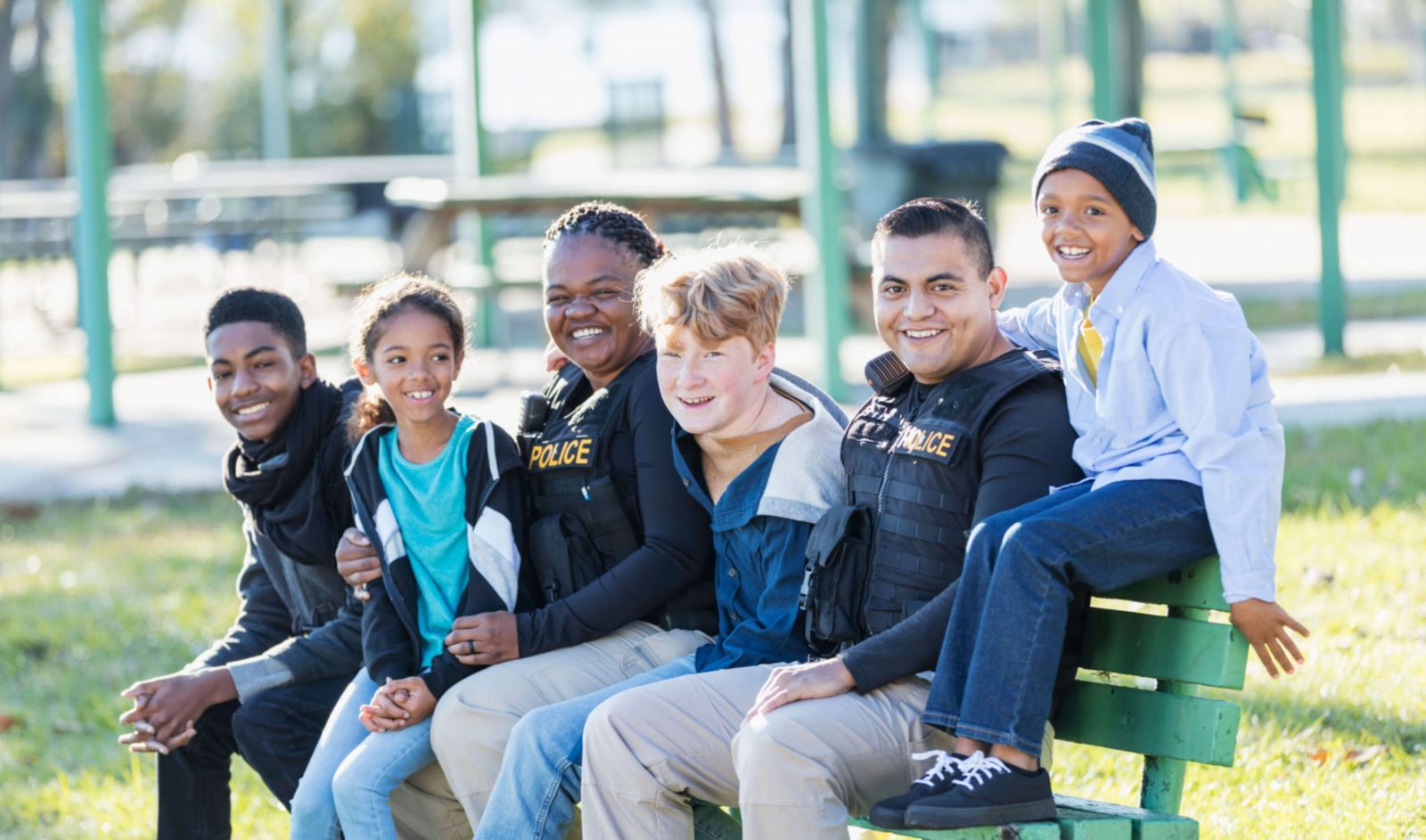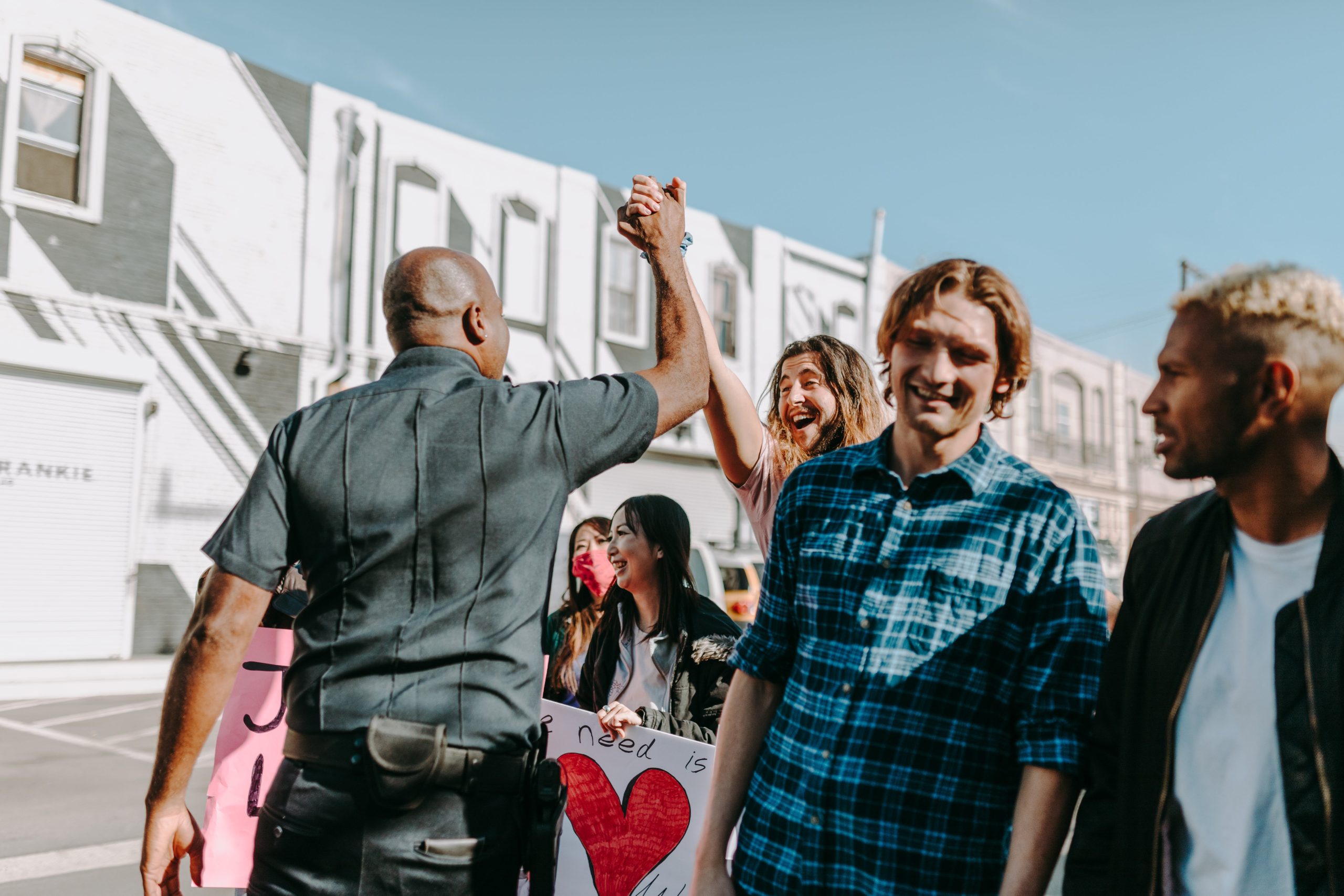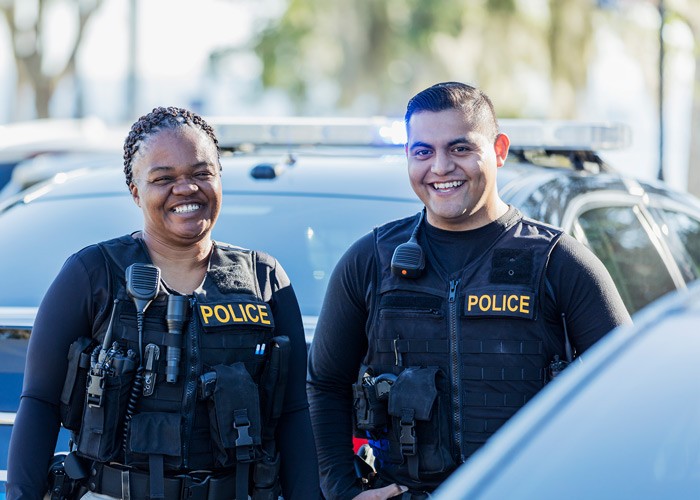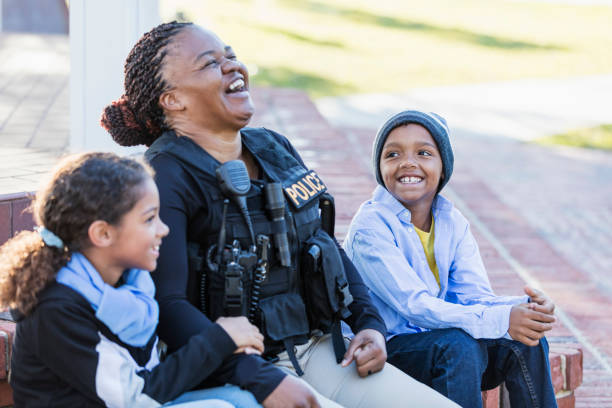Trust between police and the communities they serve is essential, yet can be elusive. High profile incidents have strained relationships and made officers’ jobs more difficult and dangerous. How can leaders strengthen bonds and show the public that the overwhelming majority of police interactions are positive?
Implementing anonymous surveys of community members after interactions with officers can provide invaluable insights while spotlighting officers’ daily good work. With proper protections and smart implementation, surveys like the Officer Survey app can benefit both residents and law enforcement.
The Need for Community Feedback
Residents want a voice in policing policies and practices that impact their lives. In a 2019 Pew survey, 65% of officers agreed it is important for “citizens to be able to weigh in about their experiences” with police.1 Yet few departments have mechanisms to systematically gather input from the public.
This blindspot means leaders lack crucial data on the approximately 61.5 million police-community interactions that take place each year nationwide. As former patrol officer and police chief Eric Hess puts it: “Do some [interactions] go badly? Absolutely. And we want to know about those too. However, because policing historically has not focused on tracking, recording, or asking for feedback on the vast majority of those encounters, we have never been able to tell this story.”
Typically officers are evaluated based on productivity measures like arrests, tickets issued, and response times. But these metrics fail to capture an officer’s skills at building community relationships through respectful engagement. By making the “beautiful blindspot” of positive interactions visible, surveys can highlight the strong ties officers are forging each day.
As Sheriff Javier Salazar of Bexar County, Texas commented on implementing the Officer Survey app, “It allows us to get feedback from people that we are interacting with every day so we can find out what we are doing right, and what we need to improve on.”
The Power of Procedural Justice
Decades of research have demonstrated that how police interact with the public is just as crucial as the outcomes of those encounters. Pioneering criminologist Tom Tyler calls this dynamic procedural justice. “People are more likely to obey the law when they believe that law enforcement authorities are legitimate and that they are treated fairly by them,” Tyler explains.
In a recent study of 1,200 residents interacting with officers from the Oakland, California police department, Tyler found that “people felt better about the police when officers listened to them and explained their decisions, treated them with courtesy and respect, and seemed concerned about their welfare—even when they personally disliked the outcome of the interaction.”
Cultivating procedural justice should thus be a top priority. But how do departments know if their officers are successfully applying these practices in the field? Surveys provide the answer by asking community members directly about their experiences.
Questions can address issues like whether the officer:
– Listened carefully to their concerns
– Treated them with dignity and respect
– Seemed genuinely concerned about their welfare
– Clearly explained reasons for decisions or actions taken
– Gave them a chance to tell their side of the story6
This approach aligns with recommendations from the Department of Justice for improving community trust and preventing excessive force. In its 2017 report on reforming the Chicago Police Department, the DOJ called for a “robust community feedback tool…relating specifically to individual encounters between police and members of the public.”
Survey data identifies areas of strength as well as aspects of procedural justice that may need reinforcement through training. Cambridge, Massachusetts implemented citywide surveys in 2008 and found the vast majority of residents rated officers highly. But the feedback also highlighted that only 58% felt “officers had treated them with dignity and respect.” In response, the department initiated new training focused on empathy, understanding bias, and diversity.
The Power of Positivity
While problematic behavior must be addressed, polling data indicates the public has far more positive than negative encounters with law enforcement. For example:
– In a 2021 Gallup survey, 58% of Black Americans reported confidence in the police to treat them with courtesy and respect.
– A 2022 study across U.S. cities found 61% of residents believe officers “do a good job of treating people fairly” in their community.
But these encouraging experiences rarely make headlines. Implementing community surveys surfaces the strong rapport and goodwill already present between police and neighborhoods – the true day-to-day working reality for most officers.
Capturing positive feedback provides a counter narrative to sensationalized media coverage portraying police as militaristic aggressors. It affirms the values that drew conscientious officers to the profession in the first place – helping people in need.
As Sgt. Jonathan Mattingly of the Louisville Metro Police noted, “The community gets a voice into every encounter we have, and they can say this officer did an outstanding job, and here’s why I think that. It helps boost officer morale. And it will help our relationship with the community in the long run.”11
Data-Driven Insights
Compiling interactions through Officer Surveys generates data to inform department strategies and better allocate resources. The app ties each survey response to the specific officer involved via a unique code.
Leaders can track how individual officers perform on dimensions of procedural justice over time – identifying high flyers for recognition as well as those needing coaching to improve community rapport. Evaluations become more holistic and reflective of an officer’s broad impact.
Analyzing aggregate results by neighborhood and demographics sheds light on which areas have strong or vulnerable relationships with police. Departments can then target outreach efforts accordingly.
As Chief Cerelyn Davis of Memphis remarked on adopting Officer Surveys, “It gives us real-time feedback, down to the actual officer, that we can use for training, for policy revision, for performance evaluation, for resource allocation and deployment.”
External validation also aids recruitment, retention, and morale. Officer Survey data provides concrete proof of the honorable service contemporary policing delivers each day.
Overcoming Challenges
Of course, implementing post-interaction community surveys comes with obstacles to thoughtfully address. Participation rates will likely differ across neighborhoods, requiring both encouragement and assurances that all feedback is valued. Building awareness and trust takes time.
Thoughtful design choices can boost response numbers. Surveys should be short, simple, and mobile-friendly. Users appreciate defined time windows to provide input, such as 24 or 48 hours after an encounter. Guaranteeing anonymity encourages candid feedback.
Some officers may resist what they perceive as new scrutiny and “gotcha” reviews. But framing surveys as an opportunity to highlight their accomplishments often shifts attitudes. Engaging police unions early on aids buy-in while identifying potential concerns.
Once integrated as standard operating procedure, surveys become routine and non-threatening. In fact, the Cambridge police found their initial critics came to enthusiastically embrace the transparency and accountability surveys enabled. As Sgt. Glen Mills remarked, “This is the best thing our department has ever done. It made us a better, stronger department.”
The Road Ahead
Trust between police and communities faces ongoing tests from divisive political rhetoric and occasional high-profile tragedies. But the well is not as empty as some claim. Filling the “beautiful blindspot” with data on positive interactions provides ballast during turbulent times.
Surveys offer a proven method to strengthen bonds through respectful engagement – the very heart of ethical, effective policing. They demonstrate a department’s willingness to listen, learn, and evolve based on community needs. The effort required to implement surveys well is more than repaid through mutual understanding.
As Chief Cerelyn Davis summed up, “We want officers to know we have their backs, but we also want the community to know that we have their backs.” That is public service at its finest. With tools like Officer Surveys, leaders can deliver it.
Sources:
- Morin, Rich, Kim Parker, Renee Stepler, and Andrew Mercer. “Behind the Badge.” Pew Research Center, January 11, 2017. https://www.pewsocialtrends.org/2017/01/11/behind-the-badge/
- Meares, Tracey L. “The Legitimacy of Police Among Young African-American Men.” Marquette Law Review 92, (2009): 651-666.
- Tyler, Tom R., Phillip Atiba Goff, and Robert J. Kane. “The Impact of Psychological Science on Policing in the United States: Procedural Justice, Legitimacy, and Effective Law Enforcement.” Psychological Science in the Public Interest 16, (2015): 75-109
- President’s Task Force on 21st Century Policing. Final Report of the President’s Task Force on 21st Century Policing. Washington, DC: Office of Community Oriented Policing Services, 2015.
- United States Department of Justice Civil Rights Division and United States Attorney’s Office Northern District of Illinois. Investigation of Chicago Police Department. Washington, DC: DOJ, 2017.
- Cambridge Police Department. Cambridge Police Department Use of Force Analysis Report. Cambridge, MA: CPD, 2020.
- Brenan, Megan. “Black Americans Less Confident in Police Than White Americans.” Gallup, August 12, 2021. https://news.gallup.com/poll/352304/black-americans-less-confident-police-white-americans.aspx
- Ekins, Emily. “Poll: 61% Say Cops Are Doing a Good Job of Treating All People Fairly.” Cato Institute, January 19, 2022. https://www.cato.org/survey-reports/poll-61-say-cops-are-doing-good-job-treating-all-people-fairly
- Rinehart, Bill. “New App Seeks Public Feedback on LMPD Interactions.” WDRB, February 1, 2022
- Cambridge Police Department. Cambridge Police Department Use of Force Analysis Report.






